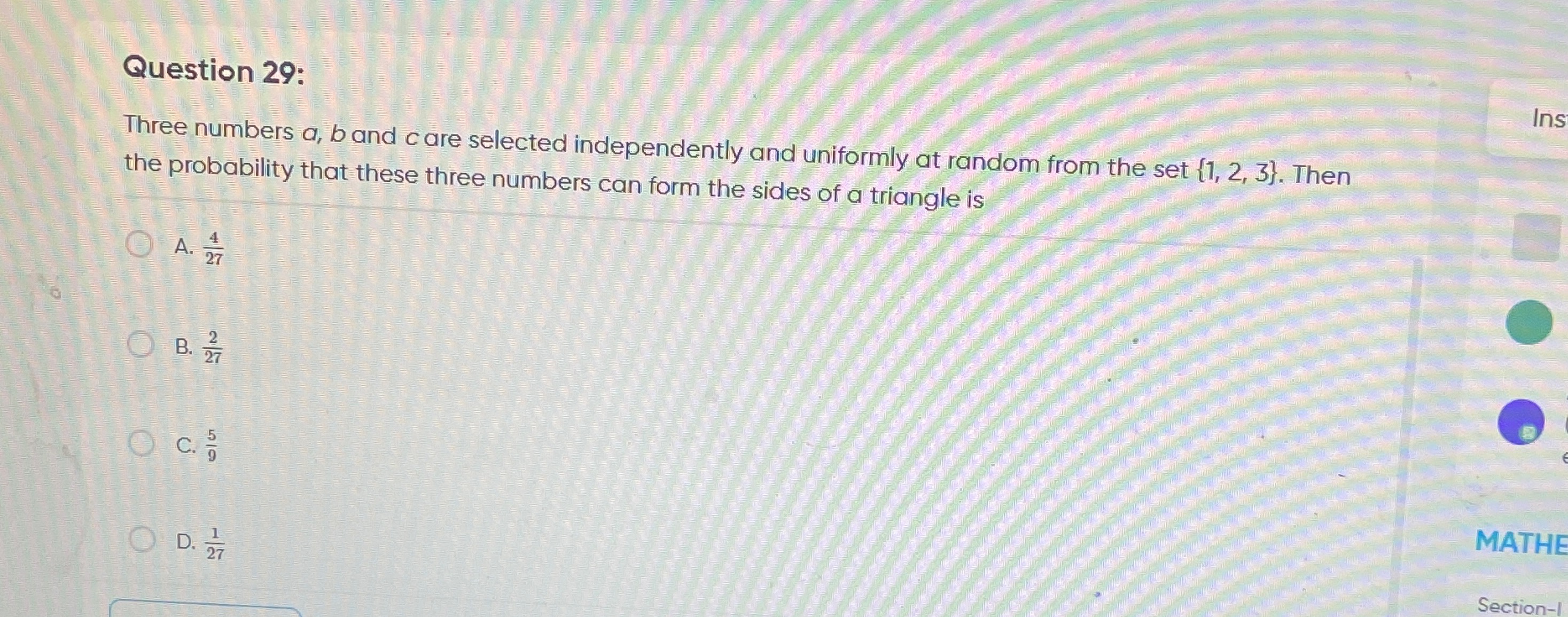Question
Question: Three numbers a, b and c are selected independently and uniformly at random from the set {1, 2, 3}. ...
Three numbers a, b and c are selected independently and uniformly at random from the set {1, 2, 3}. Then the probability that these three numbers can form the sides of a triangle is

A
274
B
272
C
95
D
271
Answer
95
Explanation
Solution
The total number of ways to choose three numbers a,b,c independently and uniformly from {1,2,3} is 33=27. For a,b,c to form a triangle, they must satisfy the triangle inequality: a+b>c, a+c>b, and b+c>a. The triplets that form a triangle are: (1,1,1) (1,2,2), (2,1,2), (2,2,1) (1,3,3), (3,1,3), (3,3,1) (2,2,2) (2,2,3), (2,3,2), (3,2,2) (2,3,3), (3,2,3), (3,3,2) (3,3,3) There are 1+3+3+1+3+3+1=15 such triplets. The probability is 2715=95.
